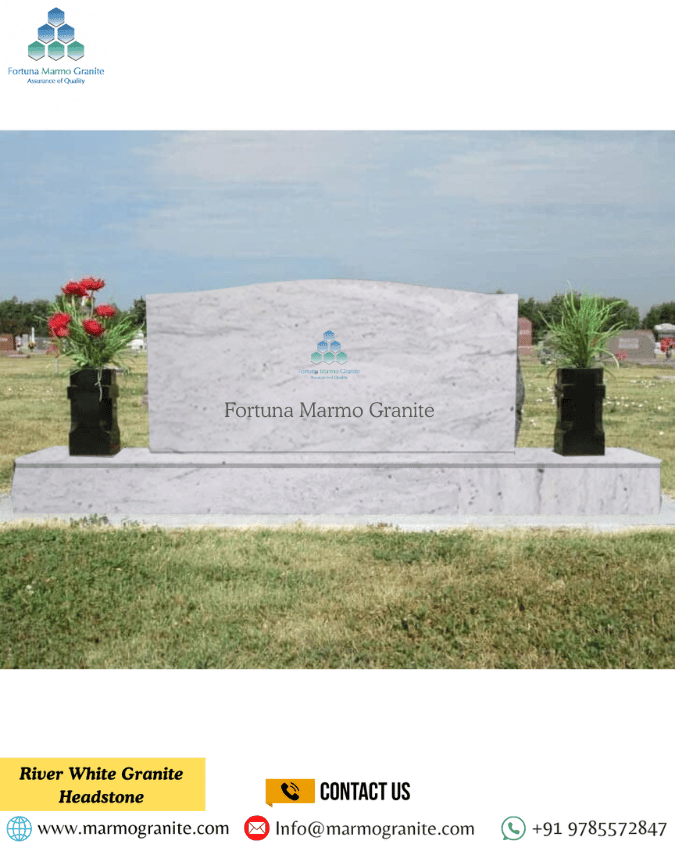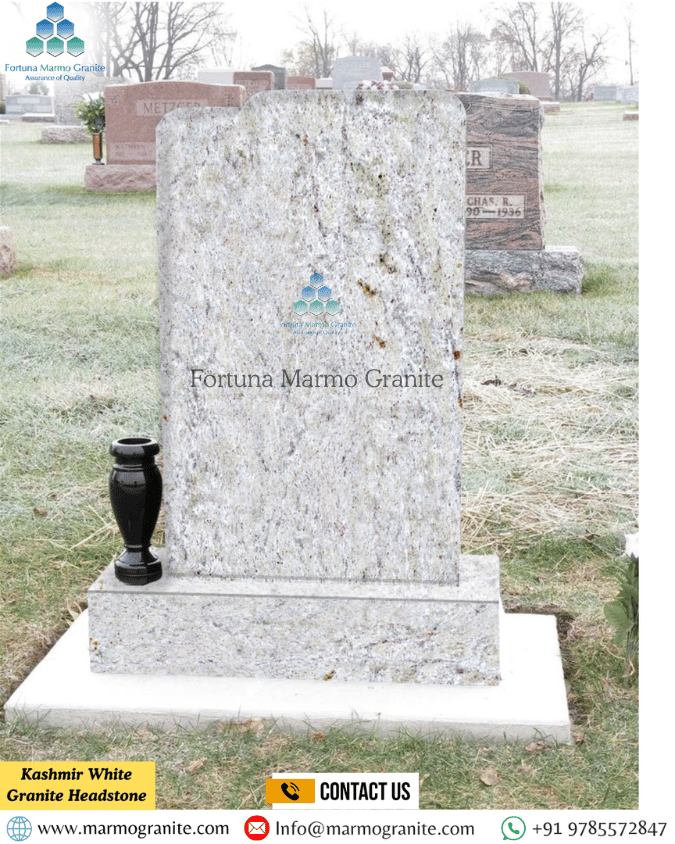Headstone Meaning Explained: Honoring Memory Through Stone
Headstone Meaning Explained The cemetery stands as a place of stillness and contemplation, where time seems to pause amidst the rows of carefully arranged memorials. It is here that headstones rise from the earth like timeless sentinels, each one carrying with it a deep reservoir of memory, emotion, and meaning. Far beyond their practical role in marking a burial site, headstones serve as profound expressions of remembrance—permanent symbols that link the past with the present and offer future generations a window into the lives that once were. Carved from durable materials like granite, these stones are chosen not only for their strength and resistance to time and weather but also for their ability to hold detailed inscriptions and artistic engravings that speak to the soul of the departed.
Moreover, Every detail etched into a headstone—be it a name, a date, a verse, a religious icon, or a decorative motif—carries layers of significance. Floral carvings might represent the fleeting nature of life, while doves symbolize peace, and clasped hands signify eternal unity or a final farewell. Even the shape and size of a headstone can reflect cultural traditions, social status, or personal preferences. In addition, When we walk through a cemetery with an understanding of these elements, it transforms the experience from one of quiet mourning into a deeply enriching journey through personal stories, cultural histories, and artistic expressions. Each monument becomes more than stone—it becomes a voice, a memory, a final message from those who came before. The headstone thus becomes a bridge between life and death, memory and legacy, silence and story.
The Anatomy of a Headstone: More Than Just a Name
A headstone, also known as a gravestone or tombstone, is typically composed of several parts, each with its own purpose:
- The Die: This is the main, upright part of the monument where the inscription is placed. It's the canvas for the name, dates, and epitaph.
- The Base: This is the foundation upon which the die rests, providing stability and often a space for additional engraving or a vase for flowers.
- The Tablet: In some designs, a tablet or ledger stone lies flat over the grave, covering the burial plot.
- The Marker: A simple, often smaller, stone that is flush with the ground.
While the components are straightforward, the choices made for each are a testament to personal style, cultural traditions, and a desire to create a lasting tribute.
Decoding the Inscriptions: The Heart of the Headstone
- The Name and Dates: The name and dates engraved on a headstone form the core of its identity. They serve as the most essential and universally recognized elements of any memorial. These inscriptions are not just details; they are a dignified acknowledgment of a person's life and a timeline of their earthly journey.
The full name of the deceased may include a first name, last name, middle name, maiden name, or even a beloved nickname. Each addition reveals layers of personal and family identity. Names often reflect heritage, lineage, and sometimes cultural or religious traditions. Including a maiden name, for example, pays tribute to a woman's family of origin and preserves her complete story.
- The Epitaph: This short, poignant phrase is a summary of the person's life or a message of love from the family. Epitaphs can be biblical verses, lines of poetry, or simple, heartfelt statements. Examples include:
- "Beloved Father and Husband"
- "Rest in Peace" (R.I.P.)
- "In Loving Memory"
- "A Life Well-Lived"
- "Gone but Not Forgotten"
A Language of Symbols: The Silent Stories in Stone
Religious Symbols:
- The Cross: The most common symbol of Christianity, representing faith, resurrection, and salvation. Variations exist, such as the Celtic Cross (with a circle around the intersection), the Latin Cross (the simple cross), and the Calvary Cross (a cross on three steps, symbolizing faith, hope, and charity).
- The Star of David: A six-pointed star representing Judaism, symbolizing God's covenant with the Jewish people.
- The Crescent Moon and Star: A symbol of Islam, though less common on graves than the inscriptions of Quranic verses.
- The Anchor: A symbol of hope, particularly for sailors, and a Christian symbol of steadfast faith.
- The Praying Hands: A symbol of devotion, faith, and the final prayer of a life.
- The Angel: A messenger of God and a guardian of the soul. An angel with a trumpet signifies the resurrection. A weeping angel represents sorrow
Nature and Floral Symbols:
- The Ivy: Represents eternal life, fidelity, and friendship.
- The Rose: A classic symbol of love and beauty. A full-bloom rose signifies a life lived to its fullest, while a rosebud can symbolize a life cut short.
- The Laurel Wreath: A symbol of victory, honor, and immortality.
- The Willow Tree: Represents eternal mourning and grief. Its drooping branches evoke a sense of sorrow.
- The Lamb: A symbol of innocence and purity, often found on the graves of children.
- The Lily: Represents innocence and purity, particularly the Virgin Mary.
- The Oak Tree: A symbol of strength, endurance, and longevity.
Occupational and Fraternal Symbols:
- Masonic Square and Compasses: Moreover, Represents Freemasonry, symbolizing morality and the tools of a builder.
- The Scales of Justice: In addition, A symbol for a lawyer or judge.
- A Book or Quill: A symbol for a writer, teacher, or scholar.
- A Lyre or Musical Note: Yet, A symbol for a musician or composer.
- An Open Book: Consequently, Can signify a life's story, an open mind, or a life's work.
Symbols of Life and Eternity:
- The Hourglass: Represents the swift passage of time.
- The Circle or Ouroboros (a snake eating its tail): A symbol of eternity and the cyclical nature of life.
- The Urn with a Drape: The urn represents a vessel for the soul, and the drape symbolizes the veil between life and death, or mourning.
- A Flame or a Torch: A symbol of eternal life and the inextinguishable nature of the soul.
- The Butterfly: A symbol of transformation, rebirth, and resurrection.
Modern Headstones: A New Chapter in Honoring Memory
While traditional symbols remain popular, modern headstones have embraced new forms of personalization. Today, families can incorporate:
- Photos: Etched or ceramic photos of the deceased, bringing a face to the name.
- Laser Etchings: Intricate scenes, landscapes, hobbies, or even portraits can be etched into the stone with incredible detail.
- Unique Shapes and Colors: Beyond the traditional rectangular stone, headstones now come in a variety of shapes, from hearts and books to custom designs that reflect a person's life. Different colors of granite and marble are also available, adding another layer of personal choice.
- QR Codes: Some modern headstones include a QR code that can be scanned with a smartphone to access a digital memorial, including a biography, photos, videos, and tributes from loved ones.
Conclusion
Indian Granite Supplier the meaning of a headstone extends far beyond its physical form—it is a deeply symbolic representation of love, remembrance, and respect for those who have passed. Headstone Meaning Explained Throughout history, headstones have been used to honor lives lived, to mark the final resting places of individuals, and to provide a space for reflection and emotional connection for loved ones left behind. Yet, Headstone Meaning Explained From the choice of stone to the carvings and inscriptions, every detail holds sentimental value and tells a unique story of a person's journey, beliefs, and the legacy they leave behind.
Moreover, At Fortuna Marmo Granite, we are honored to be a part of this meaningful tradition. With decades of experience and a heartfelt commitment to quality and craftsmanship, we specialize in creating finely crafted granite headstones that balance durability with beauty. In addition, Every stone we produce is thoughtfully designed to honor memories with grace and permanence, ensuring that the legacy of your loved ones is preserved with dignity. As one of India's trusted granite headstone manufacturers and exporters, Headstone Meaning Explained we at Fortuna Marmo Granite take pride in guiding families through this important journey, delivering memorials that offer both emotional resonance and timeless strength.



